Expeditions is the sequel to Scythe that we were not expecting
2016’s Scythe from Jamey Stegmaier and Stonemaier Games remains in the BoardGameGeek top 20, having already had a profound effect on the course of modern board gaming. Any potential sequel would be met with high expectations, and Expeditions wisely moves in a different direction — to mixed success.
Set in the same alternate 1920’s universe as Scythe, Expeditions assumes that the wars of the original game are over, but a new threat has emerged. Something extraterrestrial and potentially evil has risen up around the Volga, and research teams and scouting parties have gone missing.
The players control intrepid explorers and veteran soldiers who, along with a randomly chosen mech and their trusty companion – must venture into the wastes. Expeditions assumes the form of a card-driven engine builder with action selection, worker placement and elements of exploration, but in the same way as Scythe messed with the accepted standards for its mechanisms, so too does Expeditions.

Each player receives a mech board with a unique power (such as extra movement, or a more powerful vanquish action) as well as two cards — one for their character, and one for that character’s companion. They also receive four stars (for use when boasting about their feats) and one cube in their colour, and this last component leads to Expeditions main mechanical hook.
Each mech board features a small area with four interconnected square spaces and one slightly offset circle featuring the word “refresh.” Three of the squares sit above the fourth, and these list “Play,” “Gather,” and “Move.” On most turns, a player will only be able to take two actions from the top row of these squares — either moving and gathering, gathering and playing or moving and playing (albeit in any order) and this is represented by moving the cube to cover the action they do not wish to take.
Every few turns, a player will forgo all of these opportunities to move their cube to the refresh space – at which point any played cards or used workers will return to their available resource pool. However, on the next turn, they’ll move their cube to the single space below the three named squares – and this results in them being able to take all three actions on a single turn.
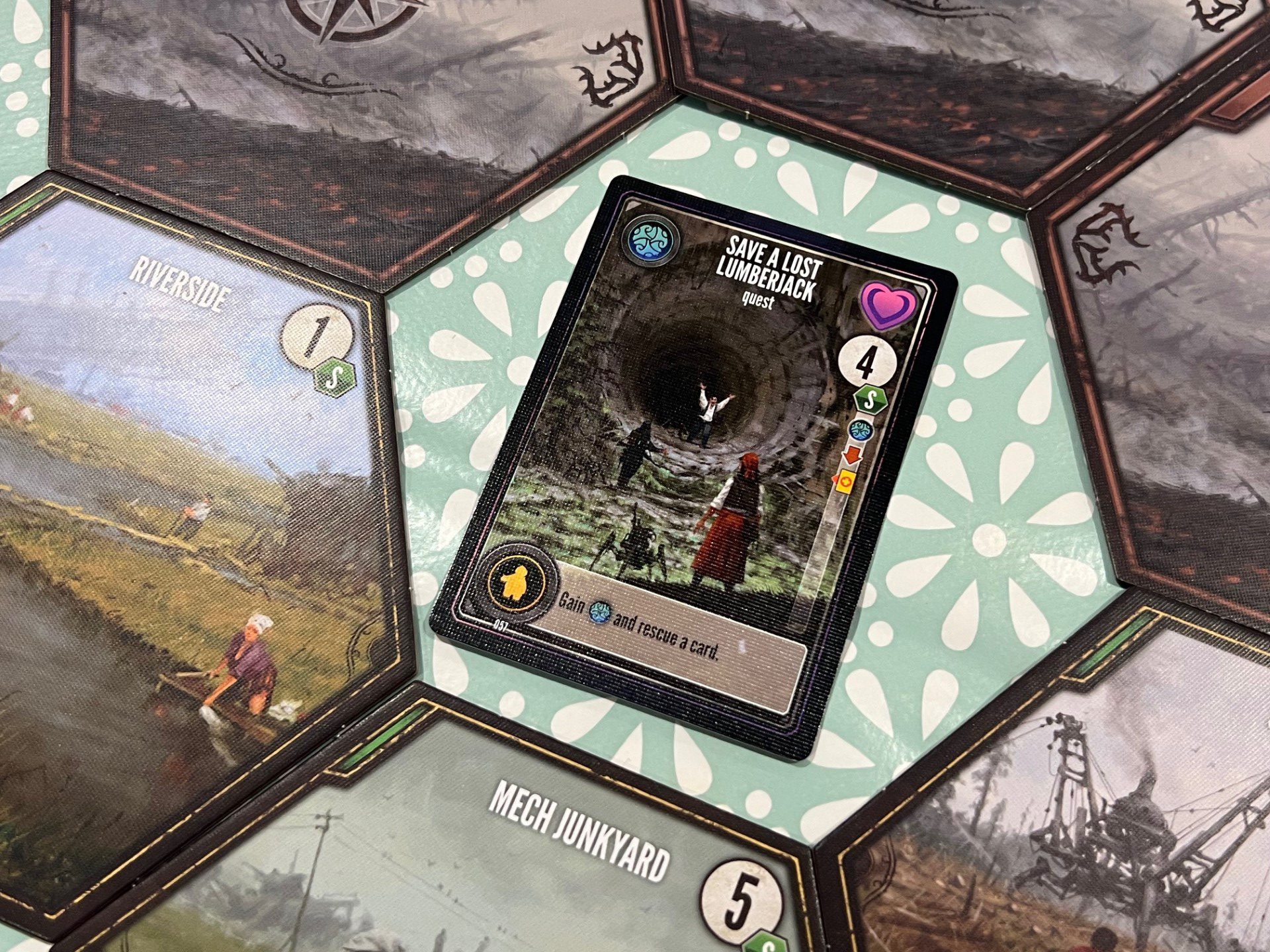
Moving is as simple as it sounds, allowing the player to move their mech between 1-3 spaces (normally) across the hex tiles that were placed during setup. The most southerly of these (the safe ones) are placed face up, but those in the centre and northern sections of the board must be flipped and explored when first visited.
Every hex space has at least one thing that can be gathered — and this is of course where the gather action comes in. The range of options is pretty vast including cards, workers, might or guile (the two main resources) and more. Other, perhaps more interesting spaces include actions that we can’t take with our basic actions — such as upgrade or meld — and these don’t appear on the southern hex tiles at all.
The play action is where things get a little more complex. Firstly, the player chooses which card to play, and does so, taking the top left benefit as printed (usually one might or guile). They may then choose a second action listed on the bottom (of most cards) which will show a coloured worker and a second, often powerful bonus — such as taking a worker or doing one of those harder-to-reach actions — like upgrading or vanquishing.
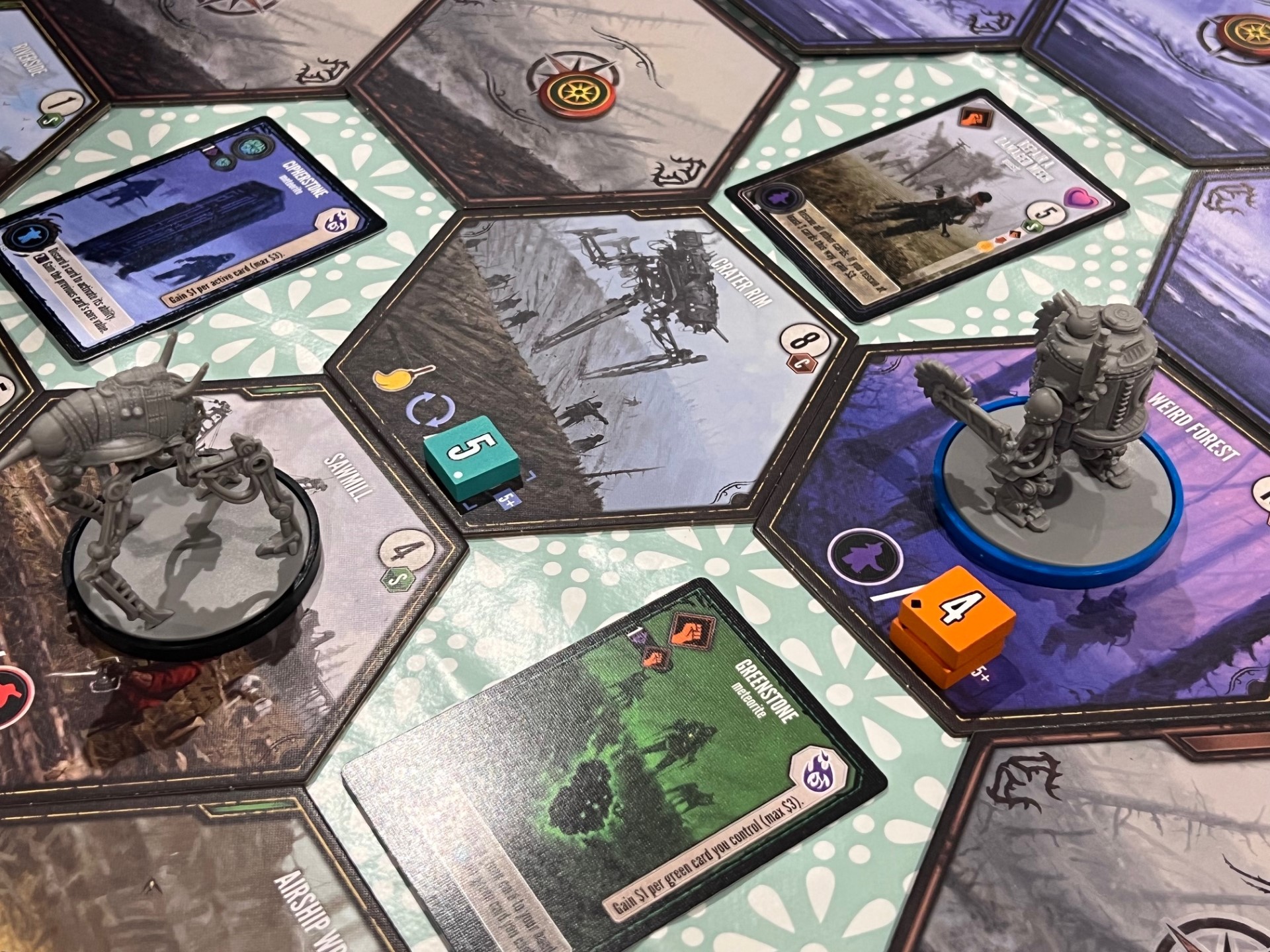
For me, this did click fairly well, but there is a bit of a disconnect between mechanics and theme. Each of the unexplored spaces will also reveal some number of corruption when flipped, and beneath that corruption, there will also be another action space that can be used with the gather action (which is in itself, a bit odd, but not insurmountable).
To clear corruption, you’ll need to vanquish – which is an action you’ll find on your starting card (although you won’t have a worker to activate it initially). Guile is spent to clear green corruption and might is used to clear orange — with the amount shown on the corruption token needing to be spent in full to clear a corruption token.
What I meant when I said that there is a disconnect between some of these elements is that Expeditions presents its alternate history (now with extra-terrestrials) well, (especially thanks again to the art of Jacob Rozalski) but it doesn’t have anything much to do with what’s happening on the board. What is this corruption? Why is it so deadly to everyone else who has visited the Volga but not to us? Why does it not attack or advance in any way to threaten the players?
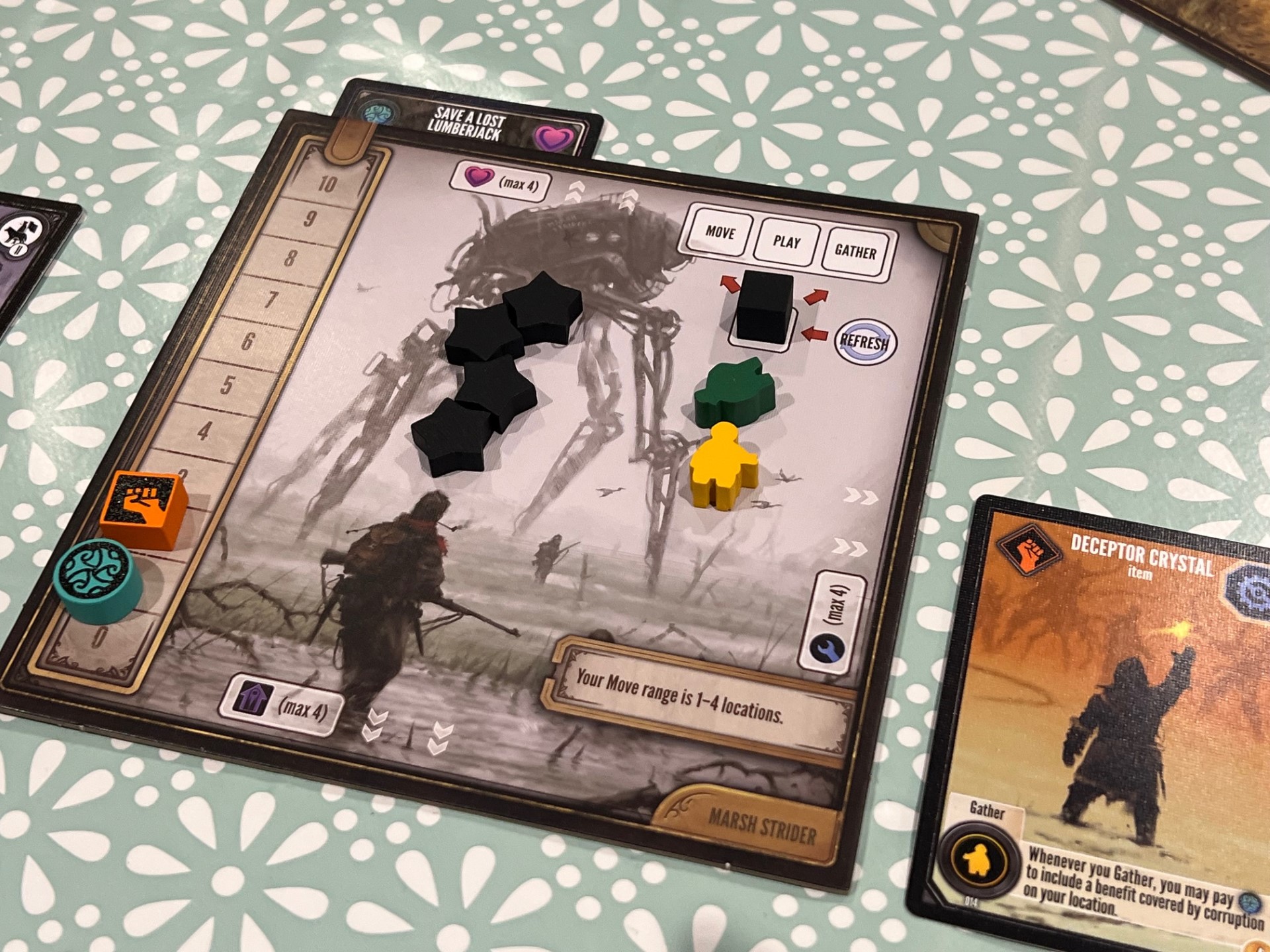
Well, probably because Expeditions is a Euro Game at heart, and not about dudes on a map, or even combat really. It’s a logic puzzle, specifically focused on efficiency. The theme, in my opinion, could be almost anything — it would work just as well if, for example, you were exploring the oceans and cleaning up pollution, for example, and it might even make more sense.
But, and this a big but for some people — if you can disconnect your thematic desires from your mechanical ones, Expeditions is pretty bloody good. The game ends when someone has boasted of their achievements four times – and boasting can be done whenever you have completed four questions, defeated the single 20-value corruption token, melded or upgraded your mech four times and for several other reasons, and theme aside, all these tasks are logic puzzles.
On your turn, you’re simply going to work your two (or rarely three) actions (plus whatever card you may choose to play) and try to move closer to one of the boasts. Is it possible to move here, gather that card, play this card to build up guile, and then place a worker to resolve a quest? Great, I’ll do it. Next turn, maybe I need to recall my cards so that after that, I can go here to vanquish corruption, and then move there to boast and trigger the end game etc.
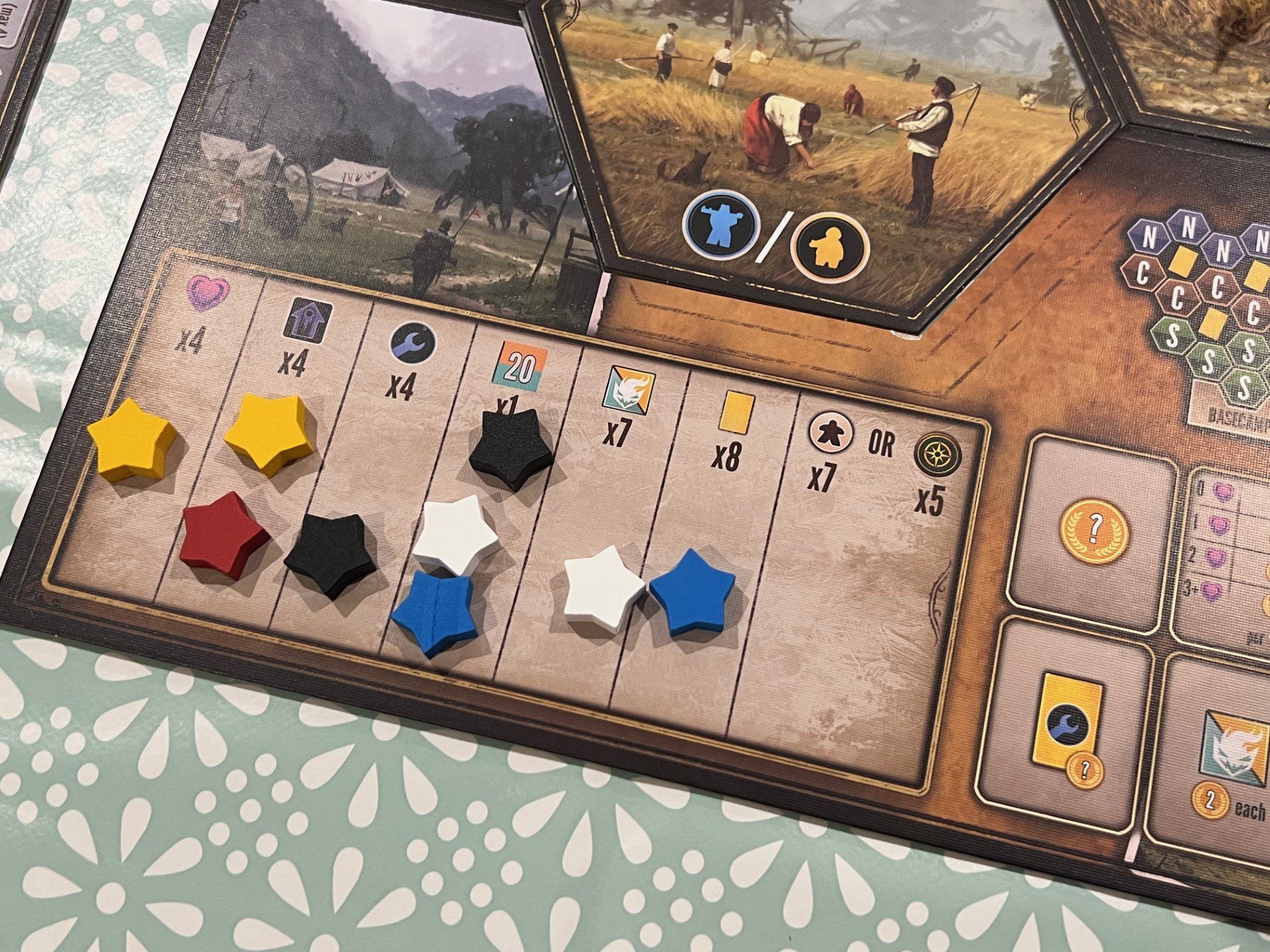
None of these things have anything at all to do with the world that Rozalski has created, nor the experiences you might have had in Scythe. Instead, they are a really superb and often tense series of linked mechanics that are capable of generating excitement at the table that will keep people talking after the game ends.
And so, I find Expeditions a bit of a conundrum. The superb artwork will be used to draw people in, but I can’t help thinking that if the only other modern game someone played was Scythe, they’d be scratching their heads as to how the two games were linked. I also think some of the heavier mechanics in Expeditions might put a few people off if they come into the game expecting a similar weight.
Where Expeditions might find a lot of traction is with the more hardcore euro gamers who actually don’t care that much about the theme — whether it works or not. As a puzzle, Expeditions is just fantastic, with quick turns that are filled with meaningful choices. From your action selection to what you do with your actions, every turn is filled with weight and meaning.
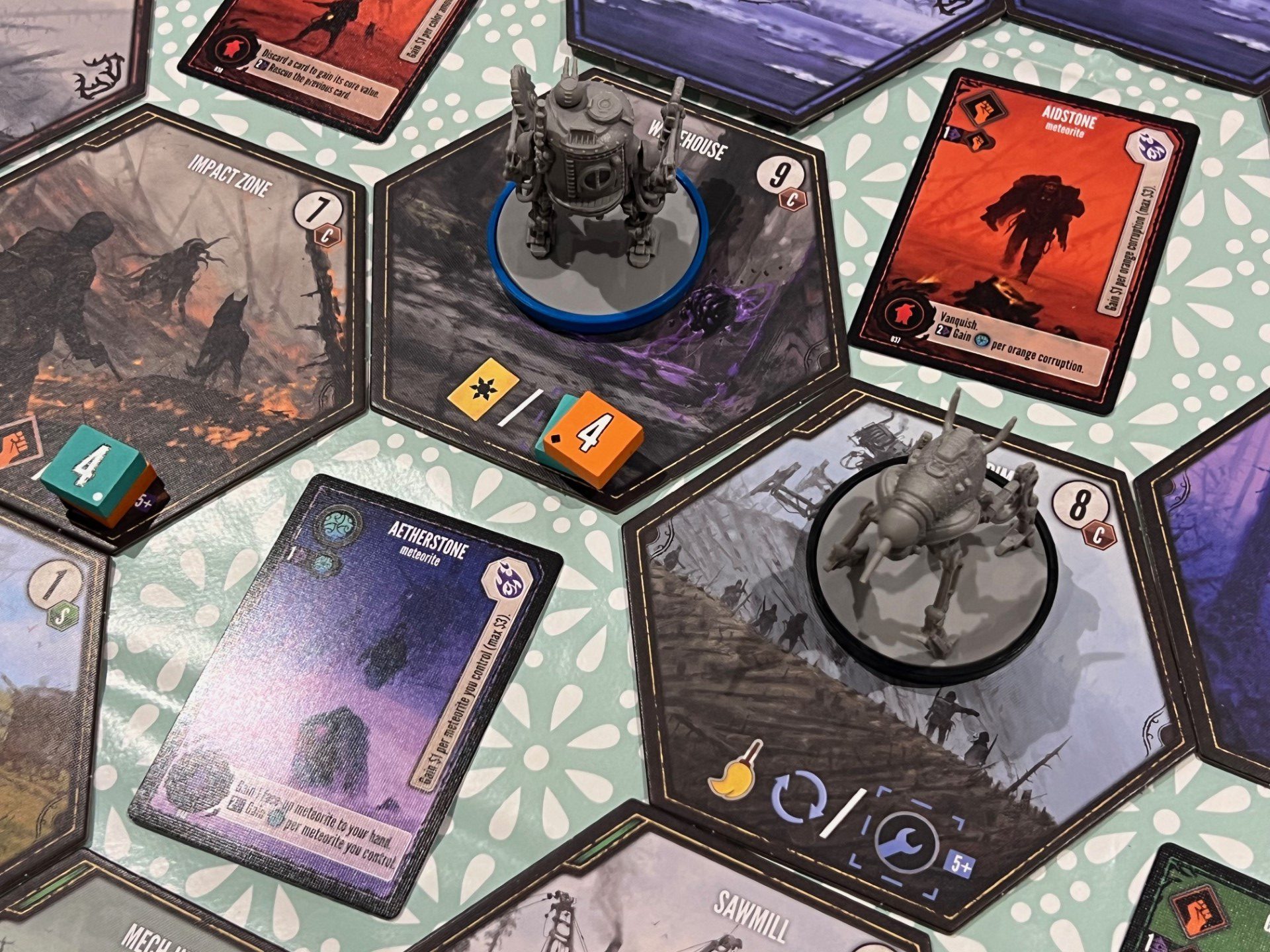
If you need the theme of a game to link to what you’re doing, then you won’t find that in Expeditions, but if you want a decision-heavy, fairly fast-paced game with next to no player interaction but lots of ways to build your own engine, then this is it. I’m not convinced that Expeditions will break new ground in the way that Scythe did, but I do applaud Stonemaier Games for trying to once again do something quite different, and I certainly can’t think of anything quite like this already in my collection.
Expeditions is available now from your friendly local game store.
Love board games? Check out our list of the top board games we’ve reviewed.
Comments are closed.